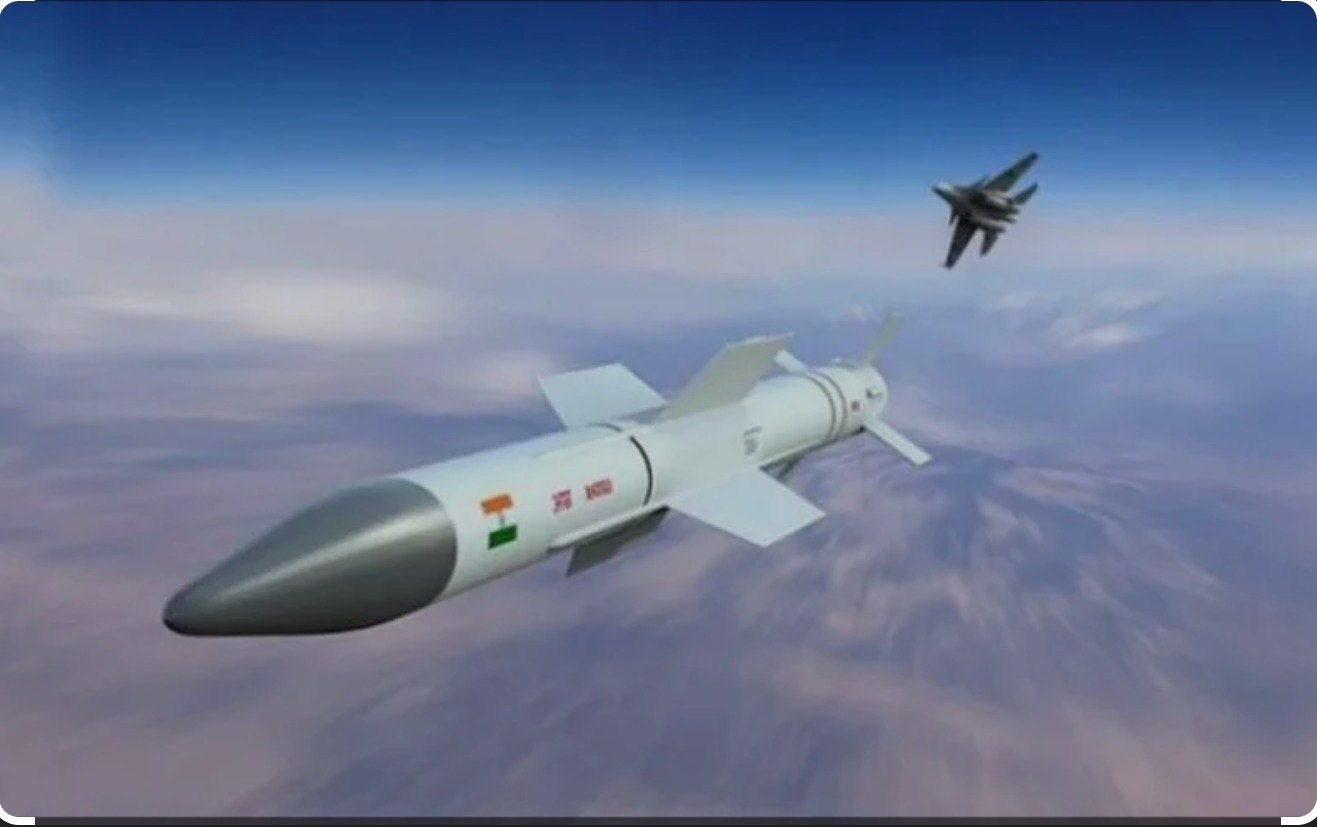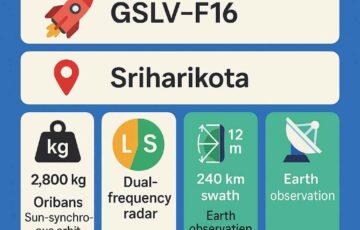India’s Rudram-4 Hypersonic Missile: Enhancing Air-to-Surface Precision Strike Capability
India’s Rudram-4 Hypersonic Missile: Enhancing Air-to-Surface Precision Strike Capability
India has officially embarked on the development of the Rudram-4, a next-generation hypersonic missile designed by the Defence Research and Development Organisation (DRDO). This advanced hypersonic missile from India will significantly upgrade the Indian Air Force’s (IAF) ability to conduct precision strikes against enemy air defenses and strategic installations. As the latest addition to the Rudram series, which includes the Rudram-1, Rudram-2, and Rudram-3, this new missile represents a major leap in India’s missile news and technological capabilities. The development of the Rudram missile family has been a focal point of missile news in India, showcasing the country’s growing prowess in advanced missile technology.
What is Rudram-4?
The Rudram-4 missile is a quasi-ballistic hypersonic missile, part of the growing Indian ballistic missile arsenal. It is designed to travel at speeds exceeding Mach 5 while following a maneuverable trajectory that evades radar detection and interception. This long-range air-to-surface missile is especially suited for Suppression of Enemy Air Defences (SEAD) and Destruction of Enemy Air Defences (DEAD) missions, making it a formidable anti-radiation missile in India’s inventory. The DRDO has been at the forefront of developing this cutting-edge hypersonic missile for India, pushing the boundaries of the country’s defense capabilities.
Key Features:
- Speed & Trajectory: Expected to fly at hypersonic speeds (Mach 5+), with hypersonic speed in Mach units far exceeding conventional missiles. The Rudram-4 follows a quasi-ballistic path, much like the Russian Kinzhal, making it extremely hard to track and intercept. When comparing hypersonic vs supersonic speeds, hypersonic missiles like Rudram-4 travel at least five times the speed of sound, while supersonic missiles are limited to speeds between Mach 1 and Mach 5.
- Guidance System: Likely to be equipped with INS-GPS navigation or NavIC-based guidance, with possible multi-mode or Imaging Infrared (IIR) seekers for precision guidance and terminal targeting. This advanced guidance system enhances the Rudram missile’s anti-radiation capabilities.
- Range: Estimated range of over 300 km, with sources suggesting potential extension up to 1,000 km, depending on payload configuration. This extensive range classifies it as a stand-off weapon, allowing for deep penetration strikes without putting aircraft at risk.
- Warhead: Capable of carrying Penetration-Cum-Blast (PCB) warheads for high-impact strikes on bunkers, radars, and reinforced enemy command structures.
- Launch Platforms: Compatible with key IAF aircraft including the Sukhoi Su-30MKI, Mirage 2000, and Rafale jets, enabling long-range standoff operations. Future iterations may even be adapted for advanced platforms like the Sukhoi Su-47.
- Propulsion: Equipped with a dual-pulsed rocket motor, providing high maneuverability and sustained speeds throughout its flight path.
Comparison: Rudram-4 vs. Russian Kinzhal
The Kh-47M2 Kinzhal is a Russian air-launched ballistic hypersonic missile that inspired several design aspects of India’s Rudram-4. This comparison highlights India’s position among countries with hypersonic missiles:
|
Feature |
Rudram-4 (India) |
Kinzhal (Russia) |
|
Speed |
Mach 5+ |
Mach 10–12 |
|
Trajectory |
Quasi-ballistic |
High-altitude ballistic with maneuvering |
|
Range |
300–1,000 km (est.) |
Up to 2,000 km |
|
Warhead |
PCB (Penetration-Cum-Blast) |
Conventional or Nuclear |
|
Launch Platform |
Su-30MKI, Mirage 2000, Rafale |
MiG-31K, Tu-22M3 |
|
Role |
SEAD/DEAD, deep strike |
Strategic, long-range deterrent |
Strategic Relevance for India
- Neutralizing Advanced Air Defenses: The Rudram-4 missile is tailored to take on sophisticated air defense systems like China’s HQ-9 and Pakistan’s long-range SAMs, effectively degrading their anti-air capabilities. Its anti-radiation capabilities make it a crucial asset in modern warfare scenarios.
- Force Multiplier for IAF: With integration across frontline platforms like Sukhoi Su-30MKI, Mirage 2000, and Rafale, Rudram-4 enhances India’s operational reach without risking pilot lives. This hypersonic missile from India complements existing air-to-air missile systems in the IAF’s arsenal.
- Counter-Interception Technology: Quasi-ballistic flight paths and hypersonic speeds make it immune to conventional interceptor systems, solidifying its role as a strategic deterrent.
- Supports Indigenous Hypersonic Roadmap: Complements DRDO’s Hypersonic Technology Demonstrator Vehicle (HSTDV) and BrahMos-II development efforts, showcasing India’s growing expertise in hypersonic technology.
- Enhanced SEAD Capabilities: As an advanced anti-radiation missile, Rudram-4 significantly boosts India’s ability to conduct effective SEAD missions, a critical aspect of modern air warfare.
The Rudram Series
The Rudram-4 is the latest in the Rudram series of missiles developed by DRDO:
- Rudram-1: The first anti-radiation missile in the series, designed for SEAD missions. Rudram-1 laid the foundation for India’s anti-radiation missile capabilities, with a range of up to 100 km.
- Rudram 2 (also known as Rudram-2): An improved version with enhanced range and capabilities. Rudram 2 builds upon the success of Rudram-1, offering extended range and improved guidance systems.
- Rudram 3: A further advancement in the series, leading up to the hypersonic Rudram-4. Rudram 3 incorporates more sophisticated technologies, paving the way for the hypersonic capabilities of Rudram-4.
This progression demonstrates India’s commitment to developing a comprehensive suite of air-to-surface missiles for various operational requirements. The DRDO has been instrumental in advancing each iteration of the Rudram missile, culminating in the cutting-edge Rudram-4.
Exam Utility:
Important Keywords for UPSC/CDS/Defense Exams:
Rudram-4, DRDO, Hypersonic Missile, Quasi-Ballistic Trajectory, PCB Warhead, Russian Kinzhal, Su-30MKI, Mirage 2000, Rafale, HQ-9, SEAD, DEAD, NavIC, Strategic Deterrence, BrahMos-II, HSTDV, Anti-Radiation Missile, INS-GPS Navigation, IIR Seeker, Stand-off Weapon
Exam-Ready Facts:
- Rudram-4 approved by Defence Acquisition Council in March 2023.
- Expected to undergo trials by 2027–28 and induct into IAF by 2029.
- Will be India’s first indigenous air-launched hypersonic missile with deep-strike capability.
- Part of India’s growing arsenal, which includes other missiles like the Astra Mk 1 missile.
- Designed to complement existing air-to-air missiles in IAF inventory.
The development of the Rudram-4 hypersonic missile represents a significant milestone in India’s defense capabilities, showcasing the country’s growing prowess in advanced missile technology and its commitment to maintaining a strong strategic deterrent. As a key player in missile news, India continues to make strides in developing sophisticated weapons systems like the Rudram missile series, further solidifying its position as a major defense technology innovator.






